Abstract
Plague in man occurred from 1968 to 1970 in mountain villages of the Boyolali Regency in Central Java. Infected fleas, infected rats, and seropositive rats were collected in villages with human plague cases. Subsequent isolations of Yersinia pestis and seropositive rodents, detected during investigations of rodent plague undertaken by the Government of Indonesia and the WHO, attested to the persistence of plague in the region from 1972 to 1974.
Since 1968, the incidence of both rodent and human plague has been greatest from December to May at elevations over 1000 m. Isolations of Y. pestis were obtained from the fleas Xenopsylla cheopis and Stivalius cognatus and the rats Rattus rattus diardii and R. exulans ephippium. The major risk to man has been fleas infected with Y. pestis of unique electrophoretic phenotype. Infected fleas were collected most often in houses.
Introduced in 1920, rodent plague had persisted in the Boyolali Regency for at least 54 years. The recent data support specific requirements for continued plague surveillance.
Full text
PDF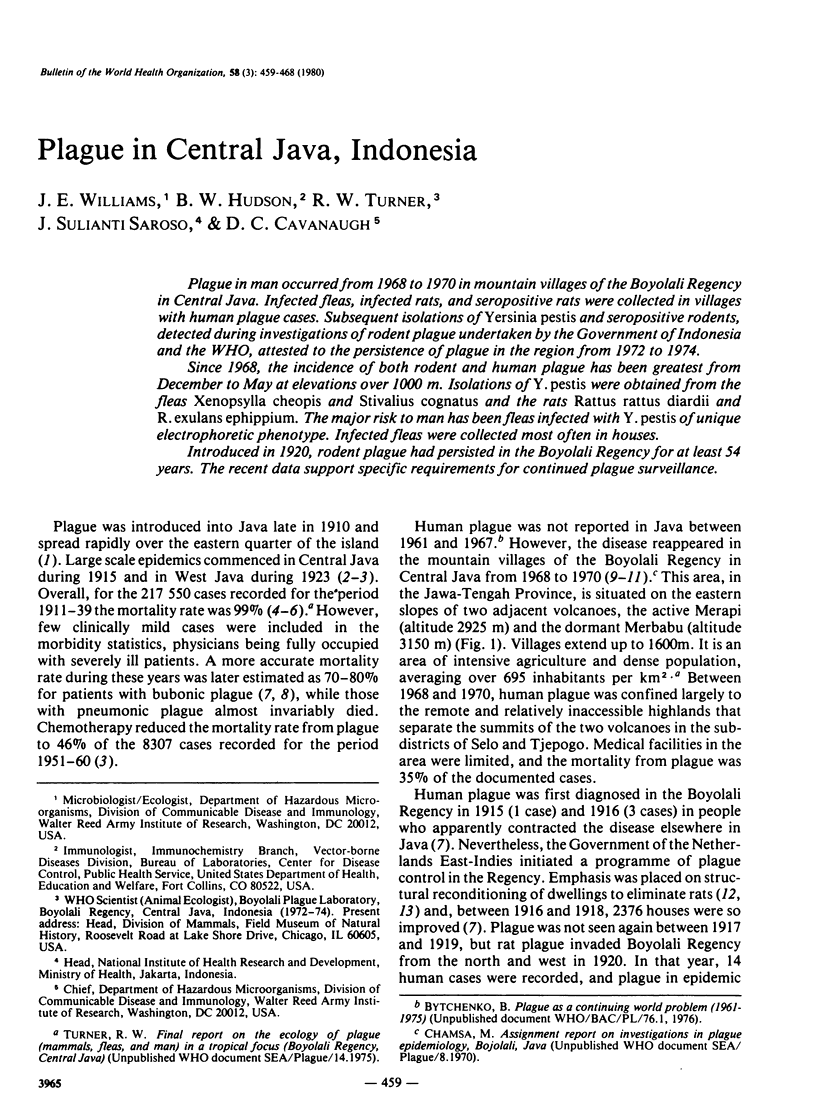
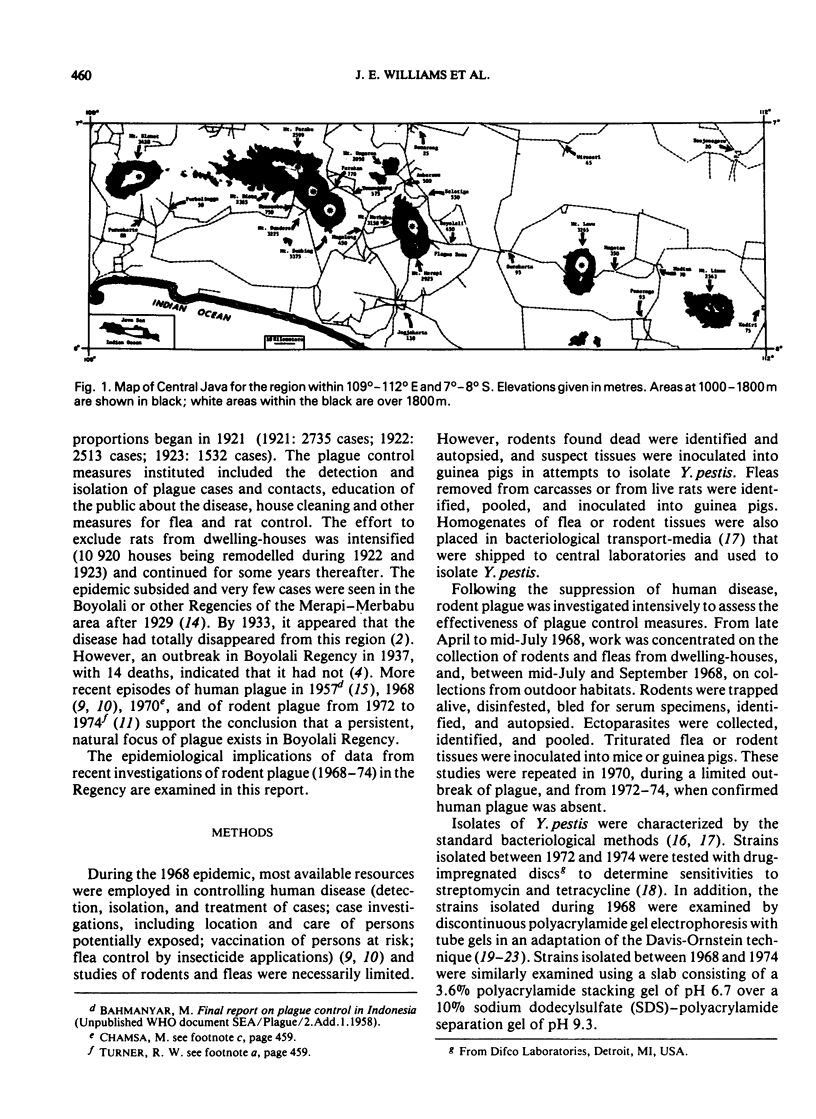
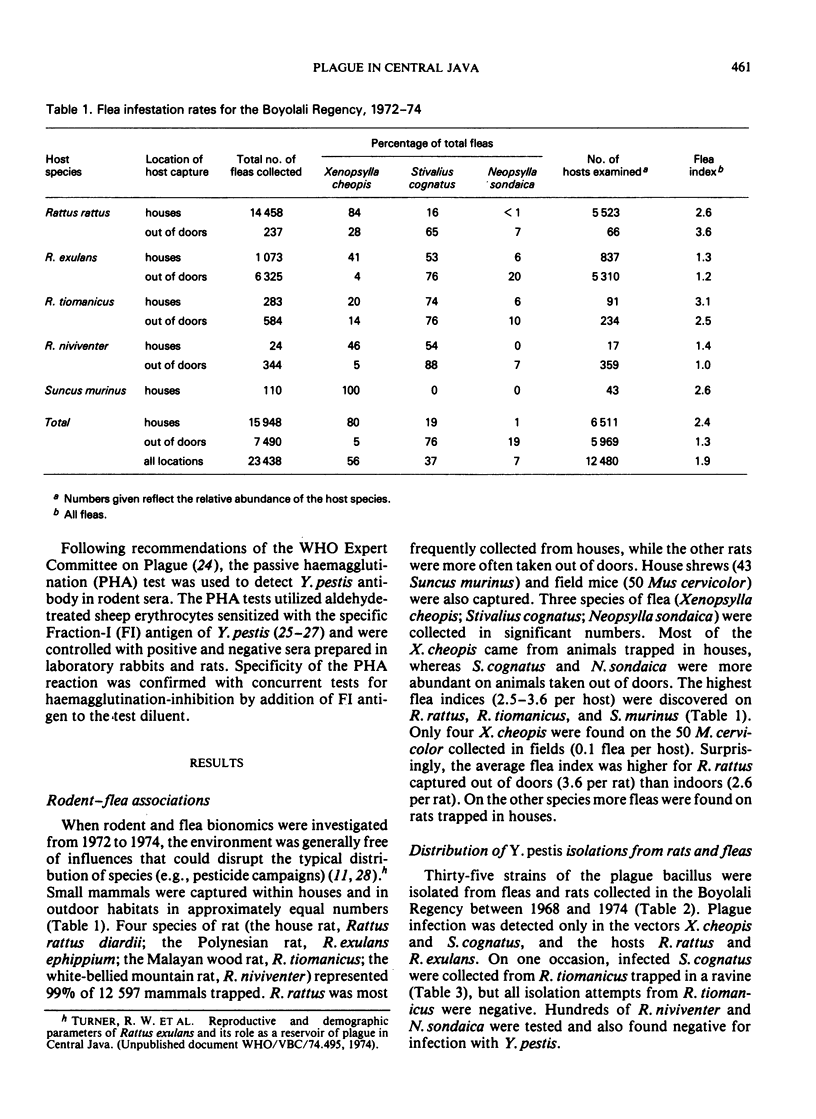

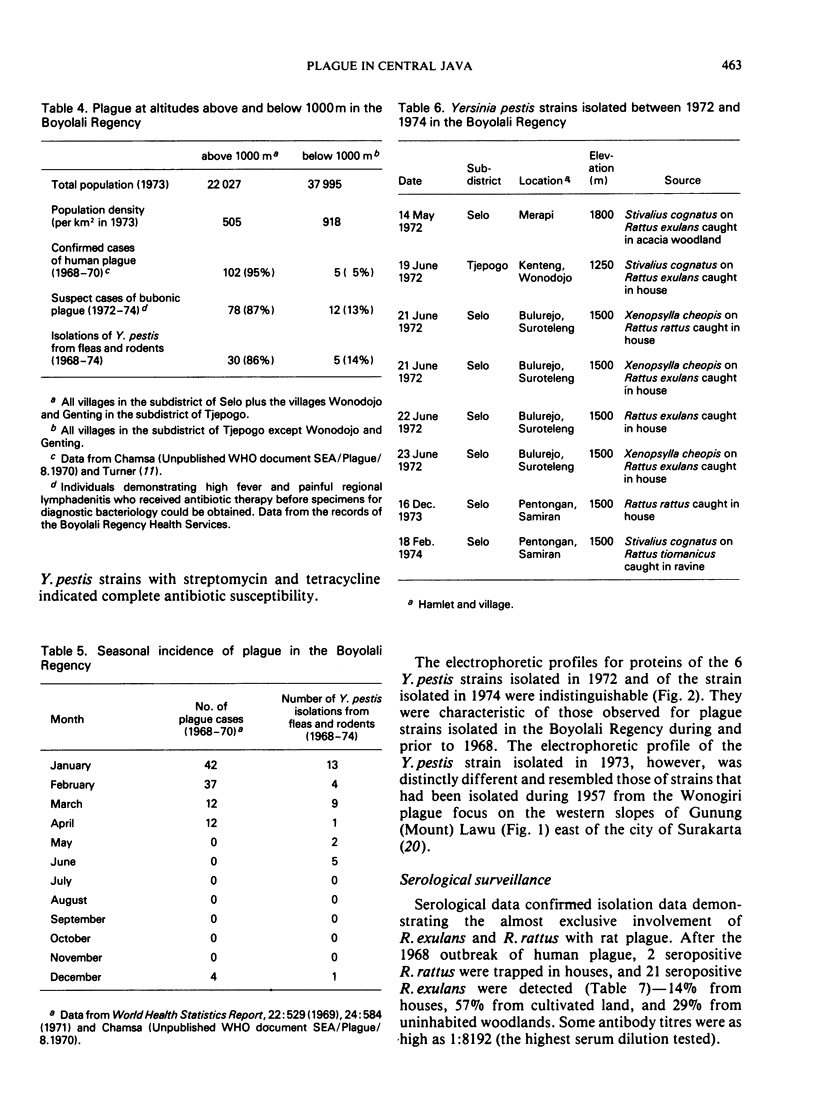
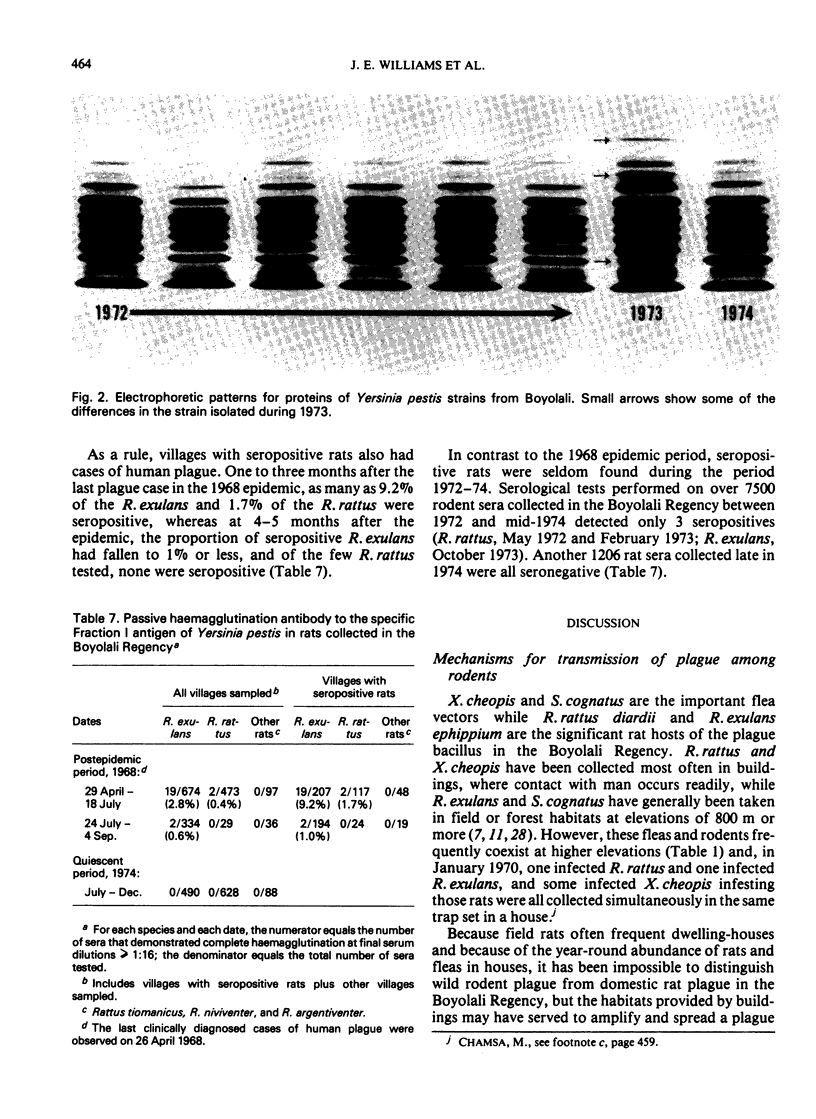
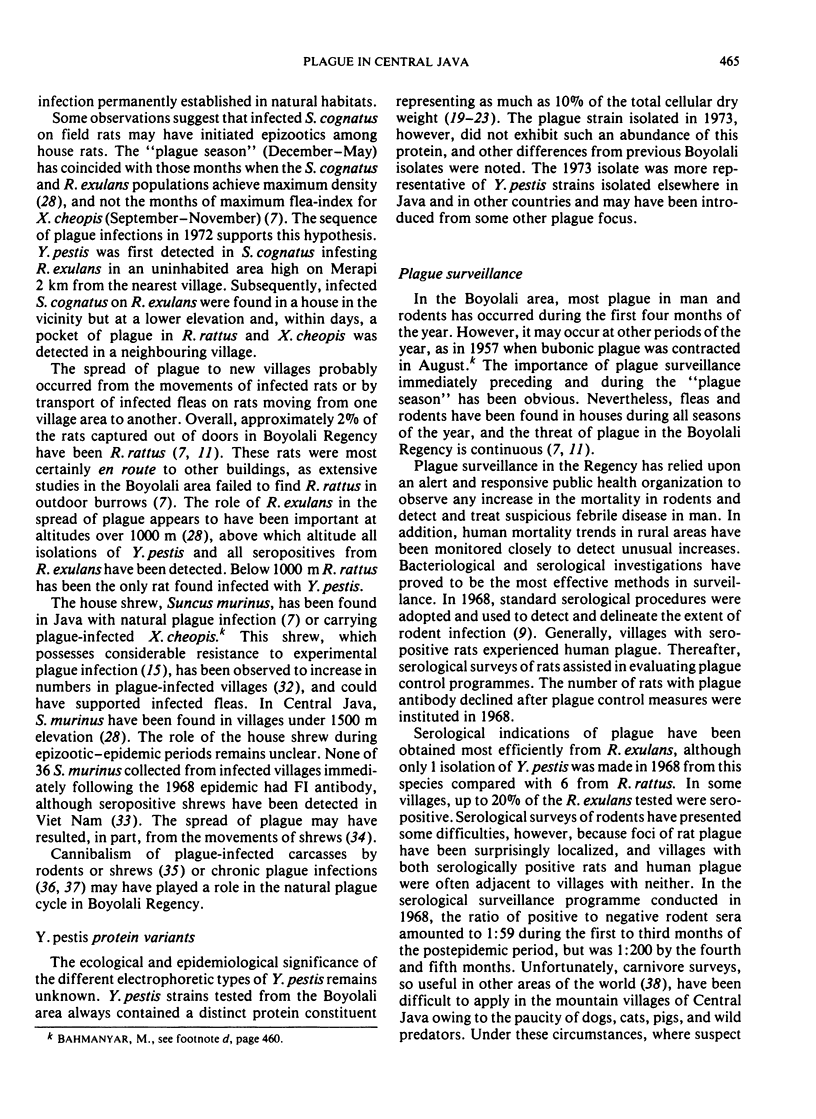
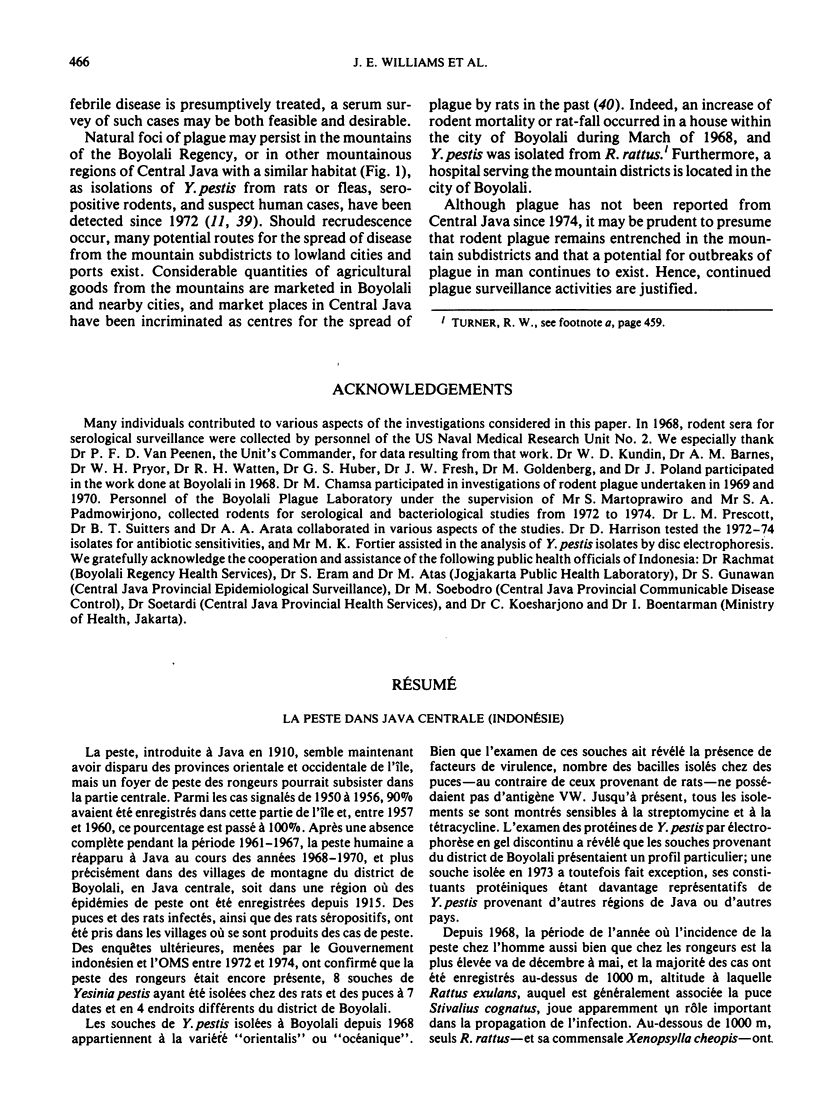
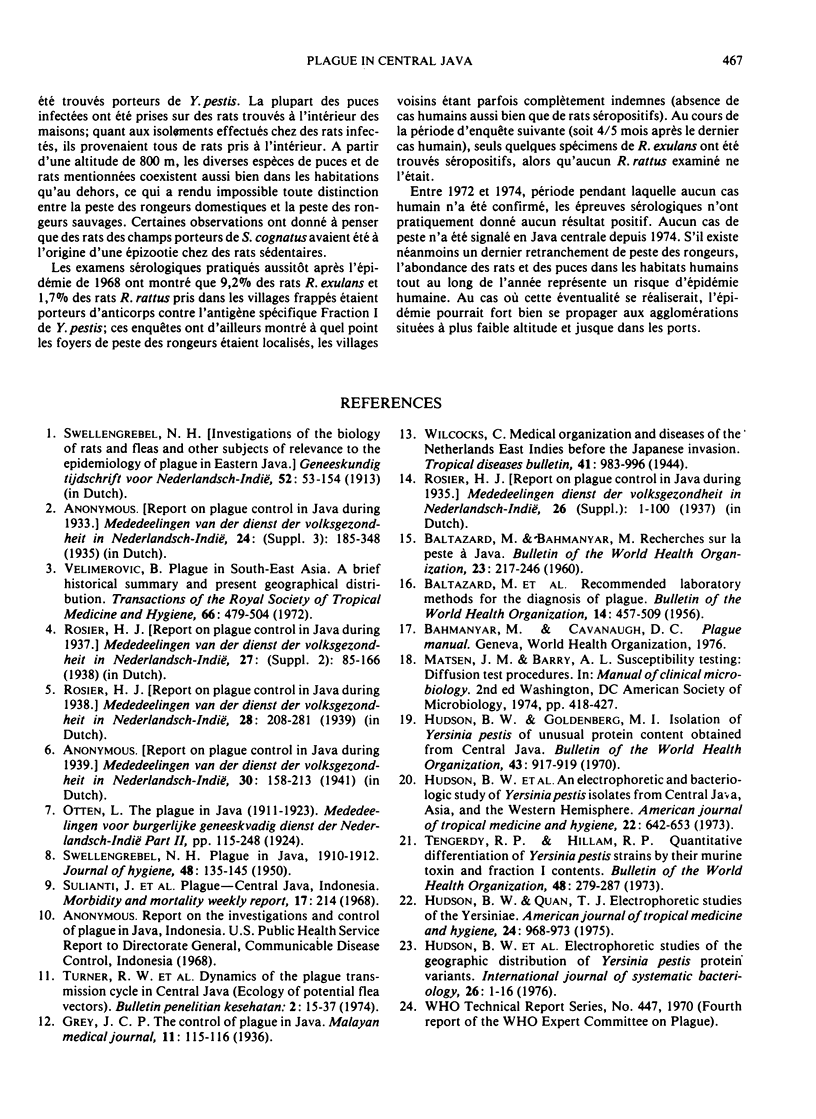
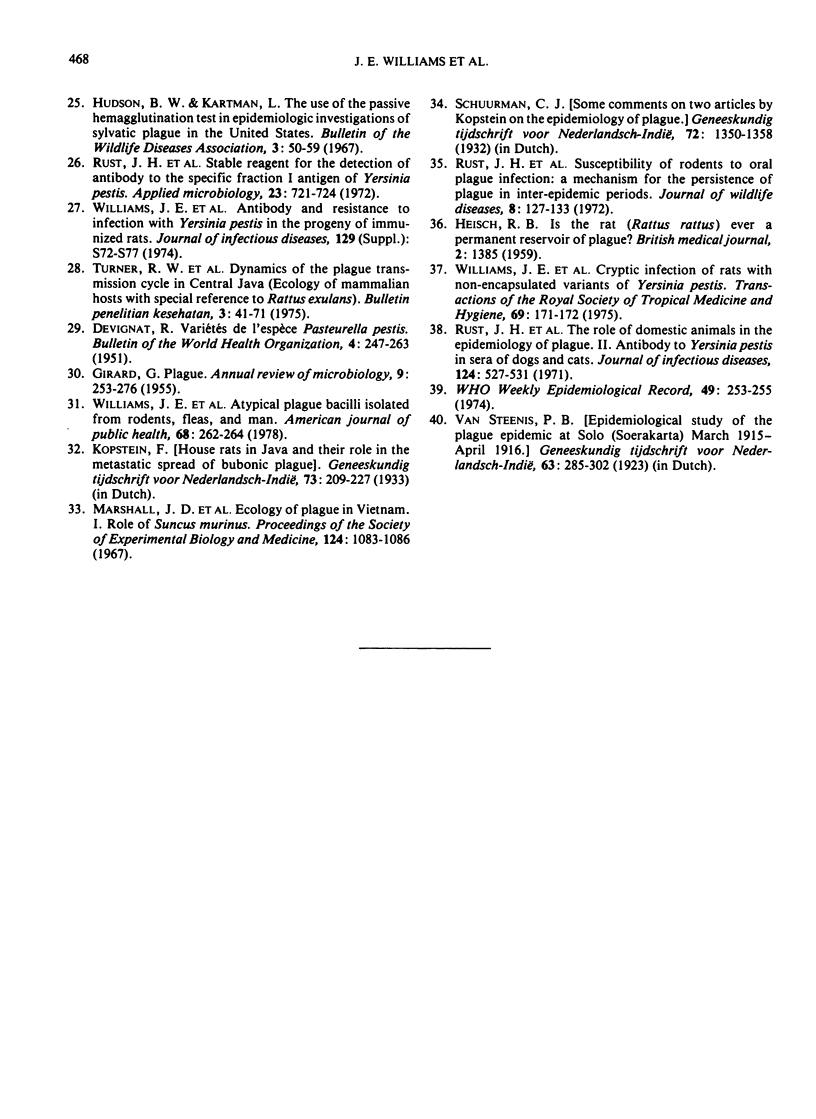
Images in this article
Selected References
These references are in PubMed. This may not be the complete list of references from this article.
- BALTAZARD M., BAHMANYAR M. [Research on plague in Java]. Bull World Health Organ. 1960;23:217–246. [PMC free article] [PubMed] [Google Scholar]
- BALTAZARD M., DAVIS D. H., DEVIGNAT R., GIRARD G., GOHAR M. A., KARTMAN L., MEYER K. F., PARKER M. T., POLLITZER R., PRINCE F. M. Recommended laboratory methods for the diagnosis of plague. Bull World Health Organ. 1956;14(3):457–509. [PMC free article] [PubMed] [Google Scholar]
- DEVIGNAT R. Variétés de l'espèce Pasteurella pestis; nouvelle hypothèse. Bull World Health Organ. 1951;4(2):247–263. [PMC free article] [PubMed] [Google Scholar]
- GIRARD G. Plague. Annu Rev Microbiol. 1955;9:253–276. doi: 10.1146/annurev.mi.09.100155.001345. [DOI] [PubMed] [Google Scholar]
- HEISCH R. B. Is the rat (Rattus rattus) ever a permanent reservoir of plague? Br Med J. 1959 Dec 19;2(5163):1385–1385. doi: 10.1136/bmj.2.5163.1385. [DOI] [PMC free article] [PubMed] [Google Scholar]
- Hudson B. W., Goldenberg M. I. Isolation of Yersinia pestis of unusual protein content obtained from Central Java. Bull World Health Organ. 1970;43(6):917–919. [PMC free article] [PubMed] [Google Scholar]
- Hudson B. W., Quan T. J., Sites V. R., Marshall J. D. An electrophoretic and bacteriologic study of Yersinia Pestis isolates from Central Java, Asia, and the Western Hemisphere. Am J Trop Med Hyg. 1973 Sep;22(5):642–653. doi: 10.4269/ajtmh.1973.22.642. [DOI] [PubMed] [Google Scholar]
- Marshall J. D., Quy D. V., Gibson F. L., Dung T. C., Cavanaugh D. C. Ecology of plague in Vietnam. I. Role of Suncus murinus. Proc Soc Exp Biol Med. 1967 Apr;124(4):1083–1086. doi: 10.3181/00379727-124-31930. [DOI] [PubMed] [Google Scholar]
- Rust J. H., Jr, Berman S., Habig W. H., Marshall J. D., Jr, Cavanaugh D. C. Stable reagent for the detection of antibody to the specific fraction I antigen of Yersinia pestis. Appl Microbiol. 1972 Apr;23(4):721–724. doi: 10.1128/am.23.4.721-724.1972. [DOI] [PMC free article] [PubMed] [Google Scholar]
- Rust J. H., Jr, Harrison D. N., Marshall J. D., Jr, Cavanaugh D. C. Susceptibility of rodents to oral plague infection: a mechanism for the persistence of plague in inter-epidemic periods. J Wildl Dis. 1972 Apr;8(2):127–133. doi: 10.7589/0090-3558-8.2.127. [DOI] [PubMed] [Google Scholar]
- Rust J. H., Jr, Miller B. E., Bahmanyar M., Marshall J. D., Jr, Purnaveja S., Cavanaugh D. C., Hla U. S. The role of domestic animals in the epidemiology of plague. II. Antibody to Yersinia pestis in sera of dogs and cats. J Infect Dis. 1971 Nov;124(5):527–531. doi: 10.1093/infdis/124.5.527. [DOI] [PubMed] [Google Scholar]
- Tengerdy R. P., Hillam R. P. Quantitative differentiation of Yersinia pestis strains by their murine toxin and fraction I contents. Bull World Health Organ. 1973;48(3):279–287. [PMC free article] [PubMed] [Google Scholar]
- Williams J. E., Harrison D. N., Cavanaugh D. C. Letter: Cryptic infection of rats with non-encapsulated variants of Yersinia pestis. Trans R Soc Trop Med Hyg. 1975;69(1):171–172. doi: 10.1016/0035-9203(75)90039-5. [DOI] [PubMed] [Google Scholar]
- Williams J. E., Harrison D. N., Quan T. J., Mullins J. L., Barnes A. M., Cavanaugh D. C. Atypical plague bacilli isolated from rodents, fleas, and man. Am J Public Health. 1978 Mar;68(3):262–264. doi: 10.2105/ajph.68.3.262. [DOI] [PMC free article] [PubMed] [Google Scholar]
- Williams J. E., Marshall J. D., Jr, Schaberg D. M., Huntley R. F., Harrison D. N., Cavanaugh D. C. Antibody and resistance to infection with Yersinia pestis in the progeny of immunized rats. J Infect Dis. 1974 May;129(Suppl):S72–S77. doi: 10.1093/infdis/129.supplement_1.s72. [DOI] [PubMed] [Google Scholar]



